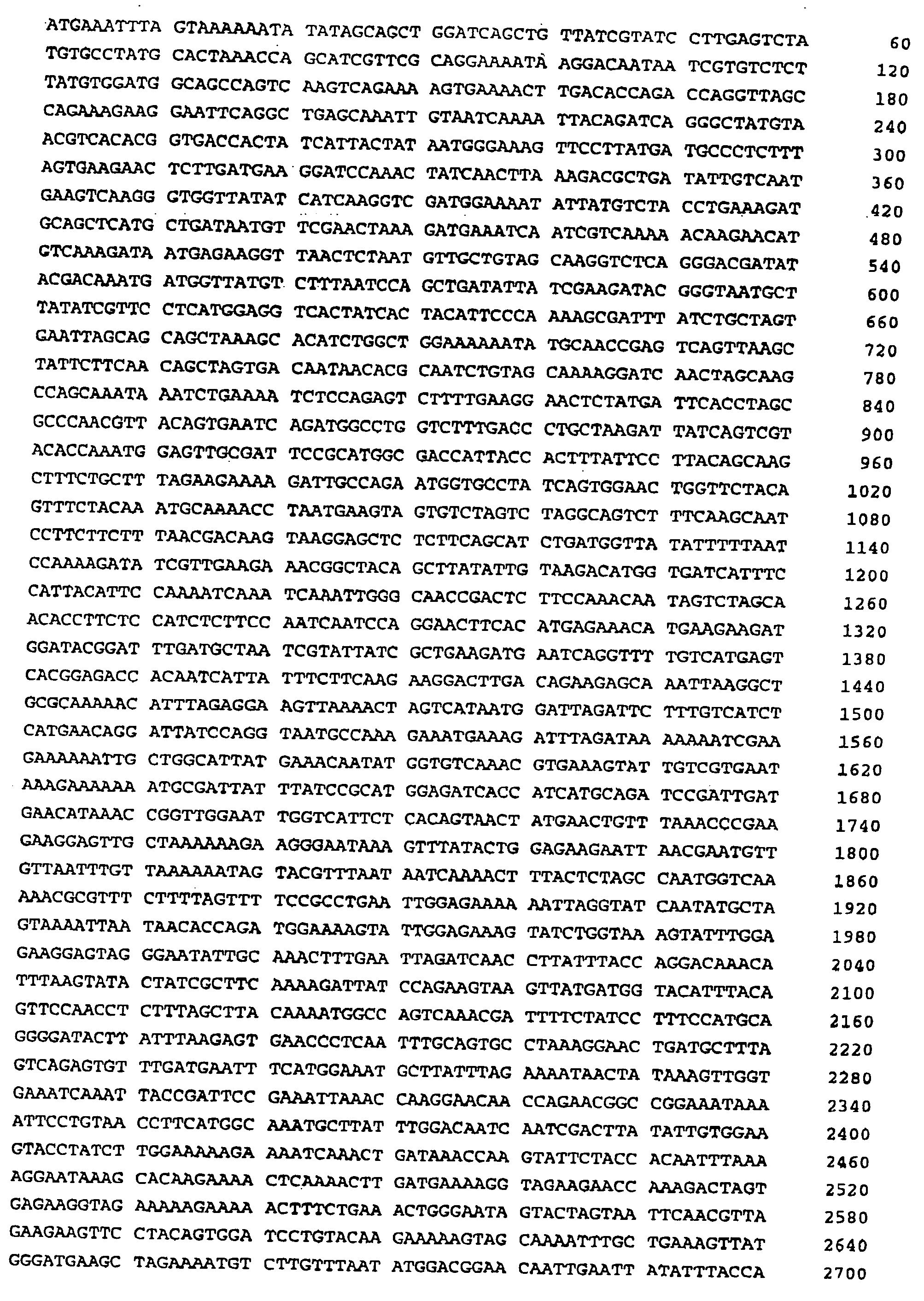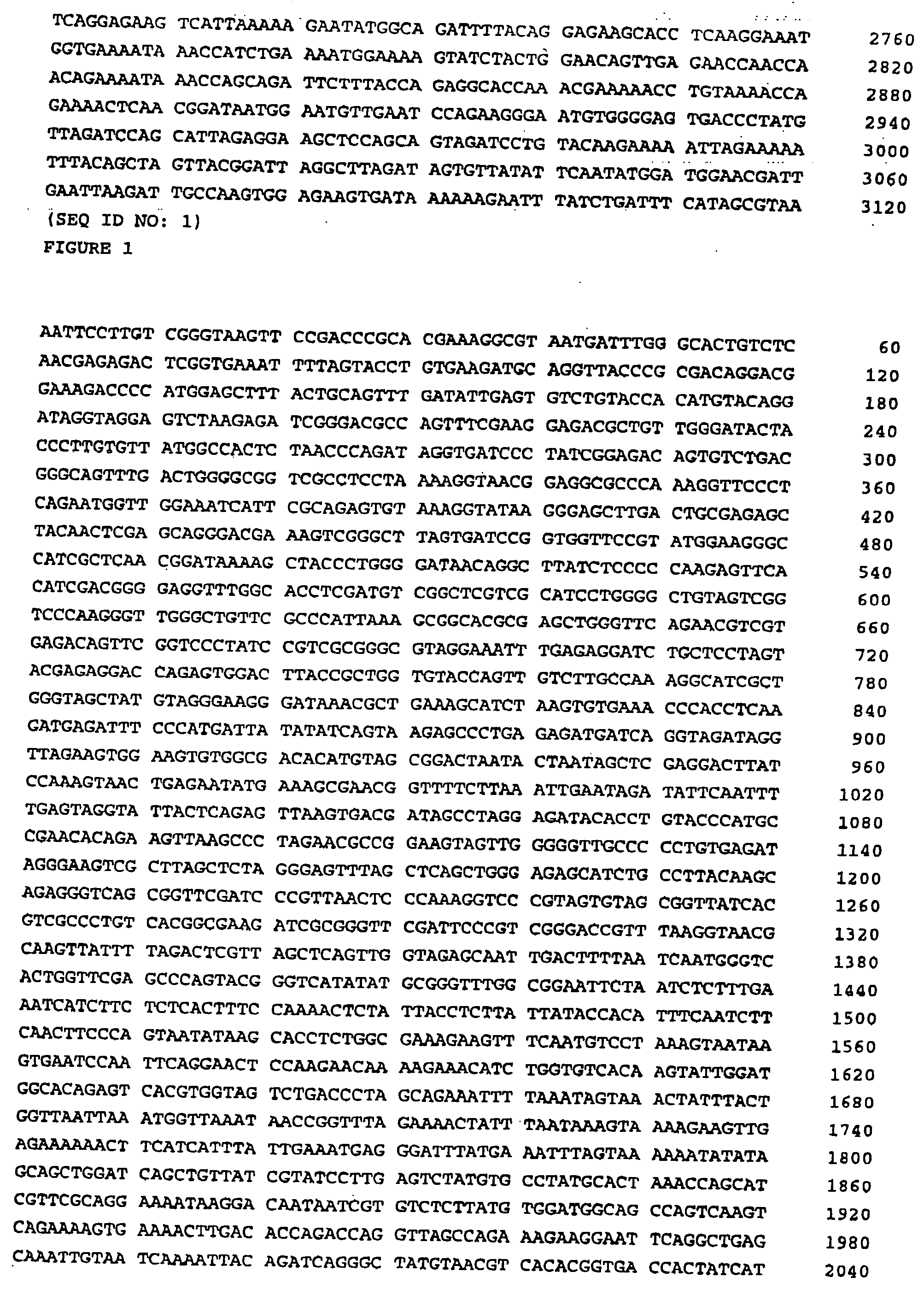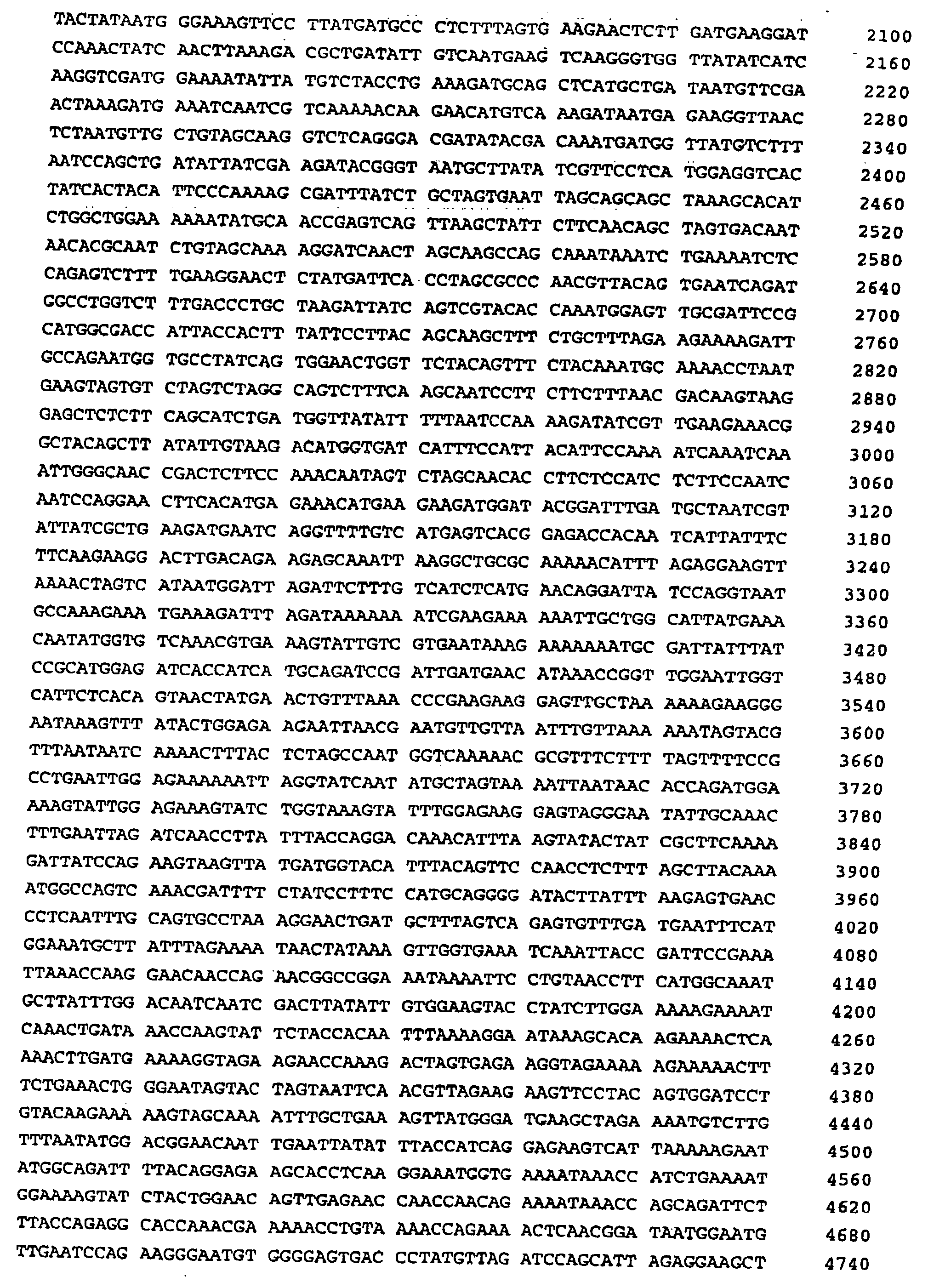Streptococcus antigens
a technology of streptococcus pneumoniae and antigens, which is applied in the field of antibodies, epitopes and antibodies, can solve the problems of many deaths, failure of existing vaccines and capsular conjugate vaccines, and the presence of resistant pneumococcal organisms,
- Summary
- Abstract
- Description
- Claims
- Application Information
AI Technical Summary
Benefits of technology
Problems solved by technology
Method used
Image
Examples
example 1
[0166] This example describes the bacterial strains, plasmids, PCR primers, recombinant proteins and hybridoma antibodies used herein.
[0167]S. pneumoniae SP64 (serogroup 6) and SP63 (serogroup 9) clinical isolates were provided by the Laboratoire de la Santé Publique du Québec, Sainte-Anne-de-Bellevue; Rx1 strain, a nonencapsulated derivative of the type 2 strain D39 and the type 3 strain WU2 were provided by David E. Briles from University of Alabama, Birmingham and the type 3 clinical isolate P4241 was provided by the Centre de Recherche en Infectiologie du Centre Hospitalier de l'Universite Laval, Sainte-Foy. E. coli strains DH5α (Gibco BRL, Gaithesburg, Md.); AD494 (λDE3) (Novagen, Madison, Wis.) and BL21 (λDE3) (Novagen) as well as plasmid superlinker pSL301 vector (Invitrogen, San Diego, Calif.); PCMV-GH vector (gift from Dr. Stephen A. Johnston, Department for Biochemistry, University of Texas, Dallas, Tex.); pET32 and pET21 (Novagen) and pURV22.HIS expression vectors (FIG. ...
example 2
[0173] This example describes the identification of peptide domains carrying target epitopes using Mabs and recombinant truncated proteins described in example 1.
[0174] Hybridomas were tested by ELISA against truncated BVH-3, BVH-11 or BVH-11-2 gene products in order to characterize the epitopes recognized by the Mabs. The truncated gene products were generated from S. pneumoniae SP64 strain except for BVH-3-Sp63 which was generated from S. pneumoniae SP63 strain. As a positive control, the reactivity of each antibody was examined with full-length BVH-3, BVH-11 or BVH-11-2 recombinant proteins. In some cases, the Mab reactivity was evaluated by Western immunoblotting after separation of the gene product by SDS-PAGE and transfer on nitrocellulose paper. The reactivities observed is set forth in the following Table 3 and Table 4.
TABLE 3ELISA reactivity of BVH-3-reactive Mabs with a panel of eleven BVH-3 geneproducts and the BVH-11M moleculeMabsGene products tested(IgGBVH-BVH-BVH-BV...
example 3
[0179] This example describes the construction of BVH-3 and BVH-11-2 gene libraries for the mapping of epitopes.
[0180] BVH-3 and BVH-11-2 gene libraries were constructed using recombinant PCMV-GH and PSL301 plasmid DNA containing respectively, BVH-3 gene sequence spanning nucleotides 1837 to 4909 (SEQ ID NO: 2) or BVH-11-2 gene sequence spanning nucleotides 172 to 2630 (SEQ ID NO: 5) and the Novatope® library construction and screening system (Novagen). The recombinant plasmids containing BVH-3 or BVH-11-2 gene fragment were purified using QIAgen kit (Chatsworth, Calif.) and digested with the restriction enzymes BglII and XbaI respectively. The resulting BglII-XbaI DNA fragments were purified using the QIAquick gel extraction kit from QIAgen and digested with Dnase I for the generation of randomly cleaved DNA. DNA fragments of 50 to 200 bp were purified, treated with T4 DNA polymerase to blunt the target DNA ends and add a single 3′dA residue, and ligated into pSCREEN-T-Vector (Nov...
PUM
| Property | Measurement | Unit |
|---|---|---|
| length | aaaaa | aaaaa |
| kanamycin-resistance | aaaaa | aaaaa |
| pL | aaaaa | aaaaa |
Abstract
Description
Claims
Application Information
 Login to View More
Login to View More - R&D
- Intellectual Property
- Life Sciences
- Materials
- Tech Scout
- Unparalleled Data Quality
- Higher Quality Content
- 60% Fewer Hallucinations
Browse by: Latest US Patents, China's latest patents, Technical Efficacy Thesaurus, Application Domain, Technology Topic, Popular Technical Reports.
© 2025 PatSnap. All rights reserved.Legal|Privacy policy|Modern Slavery Act Transparency Statement|Sitemap|About US| Contact US: help@patsnap.com



